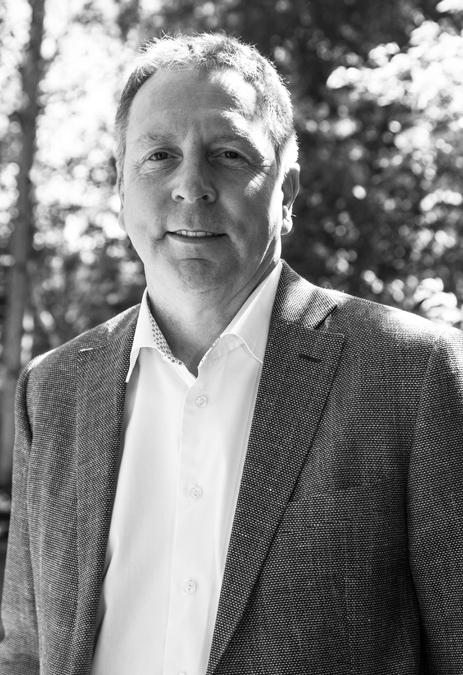You have been President and founder of IAGTO since 1997, but your facet as a zoologist is not well known, you graduated in this discipline from Durham University. What level of responsibility do we humans have in the pandemic? It is known to be a zoonotic virus, that is, it is transmitted from animals to humans. With your vision as a zoologist, something will have to be changed, right?
Is this an invitation for me to blame the animals? I am not sure that this ancient history equips me with any greater insights on this issue, but to answer your question, we humans do not have anyone else to turn to for help, so we must assume total responsibility. Nature continues to spring surprises on us, although it must be said that it is easier to surprise someone who is wearing a blindfold. Our understanding of disease, climate, geology and even outer space is truly astounding, enabling us to identify cause and effect, leading to reliable scientific prediction. This in turn instructs us on what actions can be taken to mitigate any undesirable outcome.
So we humans already have many of the tools necessary to predict and then prevent or meliorate most existential threats, take climate change as an example. The establishment of international protocols such as the Paris Agreement and the creation of umbrella bodies like the World Health Organization, point to our recognition of the importance of global solutions, but competing economies and ideologies seem destined to forever prevent us from achieving what is already within our grasp.
Now let’s talk about golf trips. In February, IAGTO was already urging golf tour operators, both public and private, from areas affected by the coronavirus outbreak not to cut funds and be prepared to invest money in promoting golf travel as soon as confidence return to the markets. Is it being like this?
Tourist boards worldwide have generally been amazing in doing everything they can to support their industry and to assist in communication with the travel trade. Of course many tourist boards’ spending has historically been linked to bed nights’ revenue from international visitors so this has been cut dramatically this year. But we expect governments to invest in tourism promotion at the appropriate time. All our communications with tourist boards in Spain have been very positive.
Beyond the particularities of each destination, do you see many differences in the way of managing the health crisis at the tourist level in the different parts of the world?
IAGTO launched its Covid-19 Recovery Hub back in April and Operational Status site in May, and these have become an essential tool for all destinations, suppliers and tour operators globally to keep track of the different reopening schedules, next phase actions, Covid-19 safety measures and safety certificates.
Without a doubt, the tourism sector has been one of the most affected by the health crisis. Do you think golf trips will better withstand the uncertainty that affects tourism around the world?
Governments around the world recognised that not only were golf courses safe havens in the midst of this pandemic, but that golf was the one activity where social distancing is basically ‘built in’, with precautions on club house access. With local play booming since May, I would say that golf has shown itself to be one of the safest ways to spend a day outdoors and I am sure that this will have a positive effect on golf travel bookings once destinations become accessible.
The golf sector in Spain is waiting for its high season, starting in October, to see if reservations are encouraged. What are the prospects for the fall?
July and August are low seasons for international golf travel but of course peak seasons for family and leisure holidays. Golf travel to the Mediterranean begins in September and peaks in October and November. We expect that golfers will see how the summer progresses and if all goes well, then late bookings in September for October and November can be expected. Unfortunately, right now, there is enormous uncertainty with European governments taking hair-trigger decisions which are impacting on travel to even the safest destinations in Spain, which is incredibly disappointing.
IAGTO operators are estimated to control more than 85% of golf vacation packages sold worldwide. What are the destinations with the most momentum currently?
The easiest way to answer this question is to say that the first area of growth will be domestic golf tourism, followed by travel to neighbouring countries and those most easily accessible by direct flights. The reservations departments of golf tour operators were very busy the moment that governments relaxed travel restrictions, so we know that there is a lot of pent-up demand from golfers to book golf holidays for this winter, but the imposition of new restrictions at short notice undermines these gains.
You know Spain well, since you were director of the Tenerife Tourist Board and you know the importance of the tourism sector for our country. Do you not miss a national tourist plan?
IAGTO works closely with the tourist boards and local governments of every territory in Spain, and each one is doing everything that they can and communicating effectively and quickly. Spain has been foremost in implementing Covid-19 safety measures and the results in the most popular destinations have been among the best in Europe. We have seen in the past few days the mistake of European countries to treat Spain as a single destination, when it should be identifying ‘safe haven’ regions with gateway airports for international tourists. As it happens, the majority of the most popular golf destinations in Spain are those with the lowest Covid-19 cases. The national government is doing everything it can to make this clear internationally, but come 2021 of course it will be beneficial for the national government to support all regions in their golf tourism promotional efforts.
And finally, the million dollar question. What are the challenges facing tourism globally? Sustainability and digitization seem to be the magic words.
The million dollar answer is “look back at 2019”… Last year was a great year for golf tourism globally, in terms of both growth and sustainability. The Covid-19 pandemic must first be overcome for us to return to and then build on what was a natural growth in our tourism sector. Every sector of the tourism industry has had to take a close look at itself over the past 20 weeks since Covid-19 was declared a pandemic, and I am proud that the golf tourism industry has risen to the challenge. First, buy ensuring that golf courses were Covid-safe, and then by re-thinking everything that we do in terms of education, training, promotion and the delivery of the best and safest-possible experience for the visiting golf traveller. While the golf tourism industry is still awaiting the resurgence of international travel, it is difficult to focus on the benefits that might come out the other side. But I have no doubt that Spain as a destination and the entire golf tourism industry will have made advancements by the end of 2021 that might otherwise have taken three or four years.








